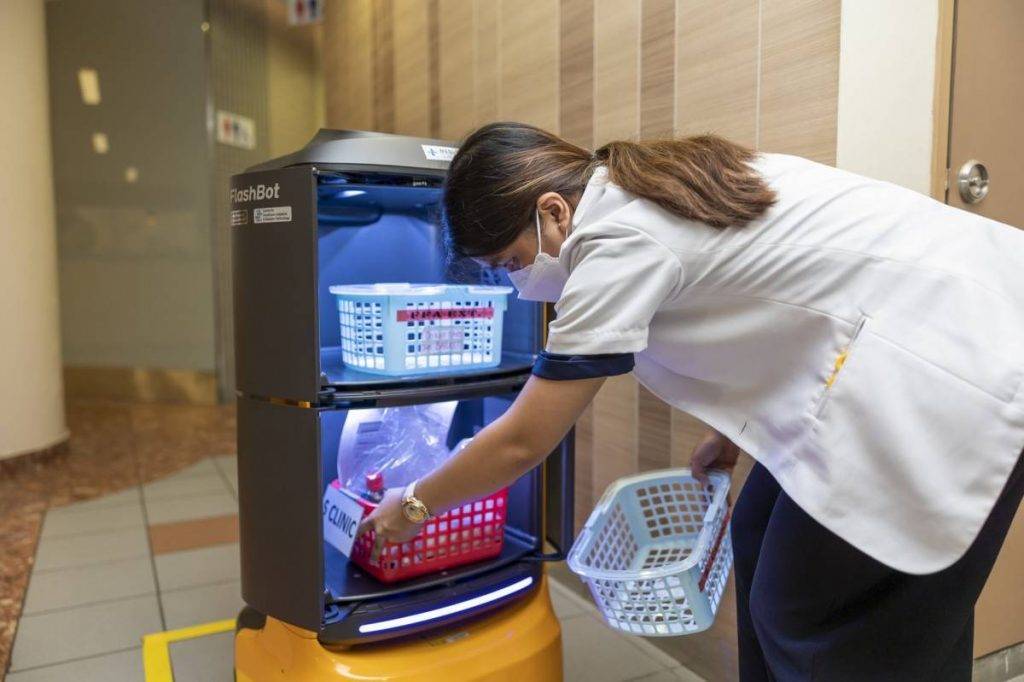Singapore’s Changi General Hospital (CGH) initiated a unique trial in April. Three autonomous mobile robots (AMRs) were deployed to the hospital’s emergency department (ED) in an effort to optimise efficiency and productivity.
Identified as MEDi, EDi, and BLANKi, these robots were tasked with various responsibilities from medicine delivery to guiding patients, relieving nurses of some routine tasks and allowing them to focus more on patient care.
MEDi: A New Era in Medication Delivery
MEDi, or Medication Delivery innovation, has been revolutionary. This robot can deliver up to four baskets of medications to different locations in the ED. In the past, nurses spent roughly seven minutes each time walking between the pharmacy and ED to fetch patient prescriptions.
The MEDi robot, in its delivery capacity, helps to deliver the physical request forms from the nurses or doctors at patient care areas to the ED pharmacy. Then, pharmacists load the required medications into MEDi, which navigates itself to the assigned destination. The robot conducts up to 16 drug retrieval and dispatch rounds each day, saving valuable time for the ED staff.
EDi: A Multilingual Guide
EDi, short for Emergency Department Innovation, helps guide patients and their next-of-kin to their appropriate locations within the hospital. Speaking Singapore’s four official languages, EDi is user-friendly, accommodating the country’s diverse demographics.
This innovative guide saves nurses approximately four minutes per guide attempt, equating to about 1½ hours saved per day.
BLANKi: A Unique Comfort Giver
Lastly, BLANKi or Blanket Delivery innovation is designed to provide blankets to visitors in the ED waiting area. Patients can conveniently halt BLANKi by touching its screen and selecting a blanket, reducing the workload for hospital staff. The robot handles roughly 50% of blanket deliveries.
Is It Worth Replicating?
CGH’s trial with the robotic trio concludes in August. Plans to enhance the robot’s capabilities include stocking BLANKi with items like bottled water and extending the usage of MEDi and EDi to other hospital departments.
In Singapore, other manual tasks have previously seen the implementation of robots. They include patrols at Changi Airport Terminal 4 and aircraft inspection by SIA Engineering. Plans for cleaning and inspecting Singapore’s rivers with robotic assistance are also underway. Changi General Hospital themselves have already deployed robots previously for other tasks.
The deployment of these robots in healthcare settings is an exciting development, demonstrating a promising future for the amalgamation of technology and healthcare, particularly in relieving the burden on healthcare professionals. Therefore, this trial could set a precedent for other Asian countries. It could potentially transform the face of healthcare in the region.
Photo Credit: Changi General Hospital

